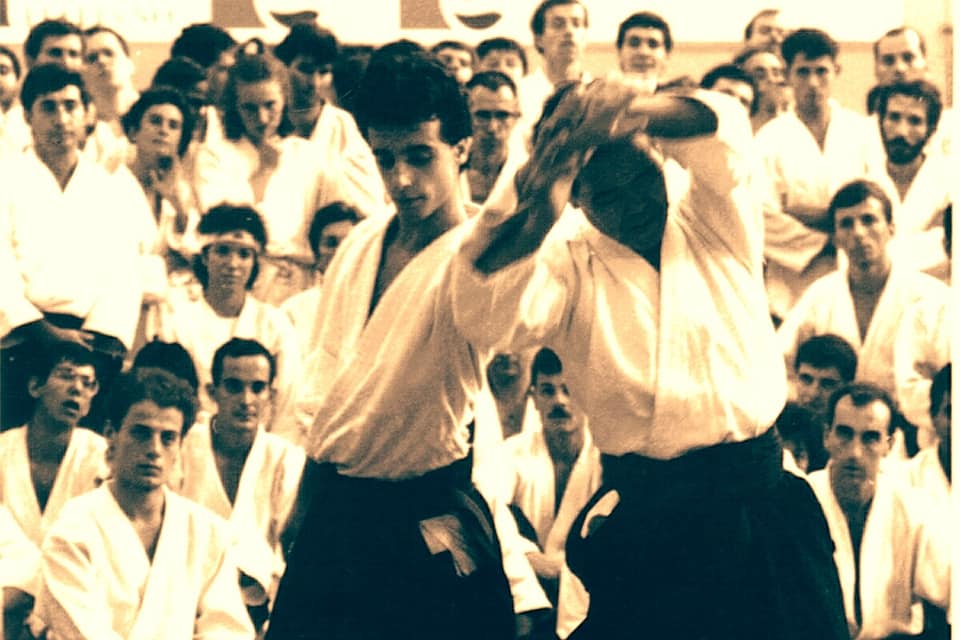“Budo is not just moving your body. At the end is whether to live or die, your view of life and death.”
-Shigenobu Okumura
This is a part of an interview with Shigenobu Okumura sensei that was published in a collection of interviews with students of the Founder published in Japanese as 開祖の横顔 (“Profiles of the Founder”) in 2009. It originally appeared in the January 2008 issue of Gekkan Hiden (月刊秘伝 / “Secret Teachings Monthly”).
Encountering Aikido in Manchuria
First, I would like you to ask about your reasons for beginning Aikido.
The first time that I learned formally was in Showa year 15 (1940), when I entered the university.
Which university are we speaking about?
It was Manshu Kenkoku Daigaku (*”Manchuria National Foundation University” / 満州建国大学, also known as “Kendai”).
In Manchuria!?!
That’s right (laughing). I was born in Otaru (小樽), Hokkaido, but when I was three years old we moved to Dalian (大連) because of my father’s work, and lived there on the continent. In Showa year 18 (1943) I graduated provisionally due to the student mobilization, and then after the war spent three years and eight months interned in Siberia before I returned to Japan.

This is like something out of the history books, I can’t even begin to imagine it…it’s shocking.
I suppose so. I suppose that it’s difficult to understand those times now. Manchuria was a strange place, with Japanese, and of course Manchurians, and former nobility that had fled from the Russian revolution running bakeries. Kenkoku Daigaku, where I learned Aikido, also had Russian students and we practiced Aikido together. The first time that I ever saw Aikido was before I entered the University.
Morihei Ueshiba’s nephew and training partner, Noriaki Inoue
And when was that?
When I was in elementary school my mother was the head of the Women’s Association, and at that time the police held a “women’s self-defense” workshop – that was Aikido. At that time Hoken Inoue sensei was teaching (*井上方軒 was the name that Morihei Ueshiba’s nephew was using at the time, later he called himself Noriaki Inoue / 井上鑑昭). However, at that time it just looked like they were messing around in zagi (*座技 / “suwari-waza”), and it was not very interesting to the mind of a child. For that reason I only did Kendo and Sumo. Because if you won with one of those at the festival you would receive a prize. (laughing)
Why did you begin Aikido at the university?
Because I thought that Aikido would be able to handle anything. For example, the Judo instructors were strong in empty hand fighting, but if you had a sword then they were no good, and the Kendo instructors were not good at empty hand fighting. Be that as it may, in Aikido when you hold a sword it becomes Kenjutsu, if you hold a bayonet it becomes Jukenjutsu, if you are empty handed then it becomes hand-to-hand combat. And that’s why thought “this way is the best”.
Source: Aikido/Facebook



